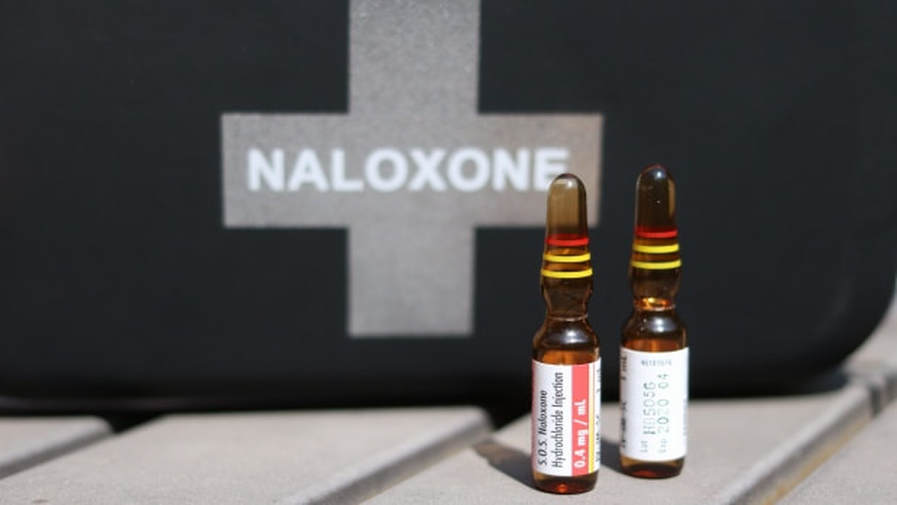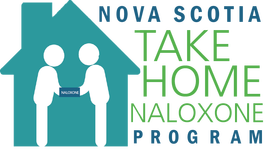
Naloxone blocks or reverses the effects of opioids, including extreme drowsiness, slowed breathing, and/or loss of consciousness.
Naloxone is used to treat an opioid poisoning/overdose by temporarily reversing the effects to give time for paramedics to arrive. Symptoms of an opioid poisoning can return, in as little as 30 minutes.1 This medicine should NOT be used in place of emergency medical care.
Naloxone should start working in 1 to 5 minutes and should last for 30 to 90 minutes.1 Since Naloxone only temporarily reverses an opioid poisoning, it is important to call 911 before administering naloxone.
Naloxone only works for drugs in the opioid family. However, if an overdose involves multiple substances, including opioids, or substances that unknowingly contained opioids, naloxone helps by temporarily removing the opioid. Naloxone is NOT expected to cause harm if given to someone who does not have opioids in their body.1
The NS Take Home Naloxone Program provides naloxone that can be injected into the large muscles of the upper shoulder or upper thigh.
In Canada there has not been any legal action taken against anyone for using Naloxone to respond to a suspected poisoning.2 Naloxone has been approved for use in Canada for over 40 years and is on the World Health Organization List of Essential Medicines.3,4
Naloxone is used to treat an opioid poisoning/overdose by temporarily reversing the effects to give time for paramedics to arrive. Symptoms of an opioid poisoning can return, in as little as 30 minutes.1 This medicine should NOT be used in place of emergency medical care.
Naloxone should start working in 1 to 5 minutes and should last for 30 to 90 minutes.1 Since Naloxone only temporarily reverses an opioid poisoning, it is important to call 911 before administering naloxone.
Naloxone only works for drugs in the opioid family. However, if an overdose involves multiple substances, including opioids, or substances that unknowingly contained opioids, naloxone helps by temporarily removing the opioid. Naloxone is NOT expected to cause harm if given to someone who does not have opioids in their body.1
The NS Take Home Naloxone Program provides naloxone that can be injected into the large muscles of the upper shoulder or upper thigh.
In Canada there has not been any legal action taken against anyone for using Naloxone to respond to a suspected poisoning.2 Naloxone has been approved for use in Canada for over 40 years and is on the World Health Organization List of Essential Medicines.3,4
References:
1. Teligent OÜ. Teligent Naloxone Product Monograph.pdf. Published online October 2018.
2. BC Centre for Disease Control. BCCDC Toolkit Responding to Opioid Overdose for BC Service Providers 2020. BC Centre for Disease Control - Provincial Health Services Authority; 2020:73. www.bccdc.ca
3. Geneva: World Health Organization. World Health Organization Model List of Essential Medicines - 22nd List. Published online 2021. https://www.who.int/publications/i/item/WHO-MHP-HPS-EML-2021.02
4. Geneva: World Health Organization. World Health Organization Model List of Essential Medicines for Children - 8th List. Published online 2021. https://www.who.int/publications/i/item/WHO-MHP-HPS-EML-2021.03
1. Teligent OÜ. Teligent Naloxone Product Monograph.pdf. Published online October 2018.
2. BC Centre for Disease Control. BCCDC Toolkit Responding to Opioid Overdose for BC Service Providers 2020. BC Centre for Disease Control - Provincial Health Services Authority; 2020:73. www.bccdc.ca
3. Geneva: World Health Organization. World Health Organization Model List of Essential Medicines - 22nd List. Published online 2021. https://www.who.int/publications/i/item/WHO-MHP-HPS-EML-2021.02
4. Geneva: World Health Organization. World Health Organization Model List of Essential Medicines for Children - 8th List. Published online 2021. https://www.who.int/publications/i/item/WHO-MHP-HPS-EML-2021.03
